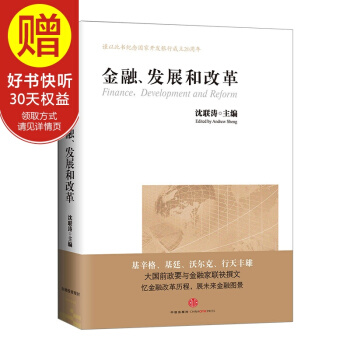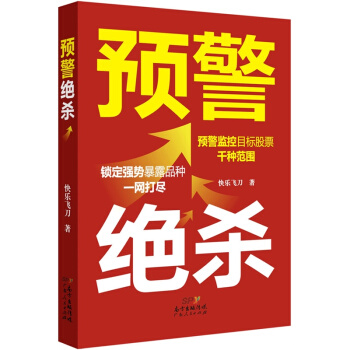![在中國(投資指南)(英文版) [China Guide: Invest in China ]](https://pic.windowsfront.com/11233914/58d159e5Nb2f7c9e6.jpg)

具體描述
編輯推薦
“在中國”係列為指南類圖書,專為來華旅遊、學習工作及生活的外國朋友編寫,以實用、可讀性強的方式呈現中國多方麵的資訊。本係列內容目前涉及旅遊、投資、留學及電影文化等方麵的,方便來華人員瞭解中國概況,從事商務活動以及留學深造等,同時介紹當下中國電影文化,引導外國人更好地融入中國本地的生活,具有很強的實用性。
內容簡介
“在中國”係列為指南類圖書,以實用、可讀性強的方式呈現中國的資訊。本書為其中之一。本書將為外商介紹來華投資的基本注意事項:如中國的基本國情,經濟和投資發展現狀,稅收和土地政策,主要的招商政策和引資項目等等;也大緻介紹瞭外商來華投資的基本流程。
This investment guide book offers most authoritative information about China’s investment environment, including Chinese policies related to foreign investment, such as policy on taxation and policy on land use....
內頁插圖
目錄
CONTENTS
Chapter Ⅰ GENERAL ASPECTS
Chapter Ⅱ LEGAL SYSTEM
Chapter Ⅲ FOREIGN INVESTMENT POLICY IN CHINA
Chapter Ⅳ DISTRIBUTION AND SUPPLY-CONTRACTUAL ARRANGEMENTS
Chapter Ⅴ INVESTMENT VEHICLES
Chapter Ⅵ MERGERS AND ACQUISITIONS
Chapter Ⅶ INSOLVENCY AND BANKRUPTCY
Chapter Ⅷ INDUSTRIAL AND INTELLECTUAL PROPERTY
Chapter Ⅸ TAX
Chapter Ⅹ EMPLOYMENT
Chapter Ⅺ REAL ESTATE
Chapter Ⅻ DISPUTE RESOLUTION AND PREVENTION
Appendix: CATALOGUE FOR THE GUIDANCE OF FOREIGN INVESTMENT INDUSTRIES
精彩書摘
1. Taxes Levied on FIEs
The main types of tax applicable to FIEs can be divided into two groups depending on the tax levying authorities: taxes levied by tax bureaus and customs duties levied by Customs:
A. Taxes levied by tax bureaus
I. Turnover taxes on business transactions, including:
? Value Added Tax.
? Business Tax.
? Consumption Tax.
II. Taxes on income, including:
? Enterprise Income Tax.
? Individual Income Tax.
III. Taxes on property and on certain transactions or expenditures, including:
? City Maintenance and Construction Tax.
? Deed Tax.
? Stamp Duty.
B. Customs duties levied by Customs
1.1 Value Added Tax
Value Added Tax applies when entities sell, manufacture, process, or repair tangible goods in, or import such goods to, China. Different taxation methods apply to normal and small-scale taxpayers, and there are also provisions on Value Added Tax refunds and exemptions. It is advisable for foreign investors to carry out tax planning in advance of establishing FIEs, which are subject to Value Added Tax in China.
1.1.1 Value Added Tax regime for normal taxpayers
Enterprises subject to Value Added Tax must go through a special procedure to be recognized as normal taxpayers; otherwise they will fall into the category of small-scale taxpayers. The general Value Added Tax rate for normal taxpayers is 17%, and a reduced rate of 13% is applied to certain products, e.g., agricultural products, books, water, gas, oil and milk.
To compute the Value Added Tax payable, normal taxpayers need to separately calculate the output tax and the input tax for the current period. They are entitled to issue special Value Added Tax invoices. The input tax should be deducted from the output tax in order to calculate the Value Added Tax payable.
The formula for computing the tax payable is as follows:
Tax payable = Output tax payable for the current period ? Input tax for the current period
Output tax = Sales volume in the current period x Applicable tax rate
1.1.2 Value Added Tax regime for small-scale taxpayers
The requisites for qualifying as a small-scale taxpayer are set by the relevant regulations. Unless they are recognized as normal taxpayers by the tax authorities through the recognition procedures, enterprises subject to Value Added Tax will usually pay that tax as small-scale taxpayers.
Until the end of 2008, small-scale taxpayers are taxed on the basis of the revenue derived from sales of goods or provision of taxable services at the Value Added Tax rate of 4% (for the commercial sector) or 6% (for the industrial sector). As from January 1, 2009, the aforementioned rate shall be 3% for both sectors.
The computing formula for the Value Added Tax payable by small-scale taxpayers is:
Tax payable = Sales amount x Applicable rate
Since small-scale taxpayers are not entitled to deduct input Value Added Tax from the tax payable, they are not, in principle, allowed to issue Value Added Tax invoices and must apply to the tax authorities each time before issuing a Value Added Tax invoice to normal taxpayers.
前言/序言
Introduction
In recent years, China has become one of the world’s leading economic powers (in 2010, it overtook Japan to become the second largest economy on the planet in GDP terms, behind the US). This economic development took place in the space of over 30 years as it has to be remembered that until the end of the 70s, China was closed to the outside world and during that period (first the Imperial reign, then its short experience as a republic, followed by the establishment of the People’s Republic, with The Great Proletarian Cultural Revolution), commercial relations between China and the outside world were virtually non-existent.
It should also be noted that following the breakup of the USSR, China repealed a number of the Sovietinspired laws it had passed and after the Cultural Revolution, China had no legal system for almost 20 years, which obviously greatly hindered the development of the country and its economy.
All of this changed with the reform and opening up of the country instigated by Deng Xiao Ping who, with his “open door” policy, began, from 1979 onwards, to open China up to the world. This resulted in one of the greatest economic transformations the world has seen in recent times and which radically changed the position of China and the rest of the world. Subsequently, a growing and continuous flow of foreign investment began to enter China, and today it is the second largest recipient of foreign investment in the world.
Growing foreign investment in China has also given rise to massive legislative developments in the country, which has enacted thousands of important laws and rules in recent years, providing commercial transactions with increased legal certainty. To give you an idea of the scale of the legislative change that has taken place in China in recent times, in the last five years alone China has amended, inter alia, the following fundamental laws:
Catalog of foreign investments.
Company law.
Antitrust law.
Bankruptcy law.
Property law.
Real estate legislation.
It could almost be said that in recent years, China has completely overhauled its entire legal system.
Furthermore, China’s entry into the World Trade Organization (WTO) in 2001 obliged it to open up its economy to foreign investment to an even greater degree and left it with no choice but to amend and adapt a significant portion of its laws in order to comply with the commitments it assumed in the context of the WTO.
Lastly, it must be taken into account that despite all of the abovementioned progress, the Chinese economy is still not fully open to the outside world and, as a result, foreign investors still sometimes find themselves subject to a legislative framework that differs from that applicable to national investors. This, together with the obstacles inherent in a culture and language that are so different, makes it even more difficult for foreign investors to do business in China.
This ad hoc system of rules takes the form of laws and provisions that subject foreign investment to administrative authorizations and approvals, registrations, additional requirements and, in some cases, restrictions that allow the Chinese government to control and select the type of investment it wishes to attract. This difference in treatment used to have a positive aspect in terms of the policy on tax incentives for foreign investment, which the Chinese government applied paradoxically with the aim of standardizing the tax treatment of national and foreign investors until its almost total abolition in January 2008.
In addition to the above, it must be noted that the Chinese legal system, although to a lesser extent than one might think, is influenced by the peculiarities of its recent history and current political situation. For example, the ownership of land located in urban areas continues to belong to the Chinese state while land located in rural areas or on city outskirts belongs, in general, to collective economic organizations. Nevertheless, individuals and legal entities can hold a right to use land, (known as a land use right) for a period of time depending on each concession and on the use of the land in question (e.g. residential, industrial or educational). Moreover, and to greater extent following the reforms of recent years, labor legislation stands out for the protection it affords workers which, in certain areas, even rises above the levels to which we are accustomed in European countries with higher levels of protection. We hope this book will help minimize the difficulties described above, allowing foreign investors in China to reduce the uncertainties that are inherent in a country that is so different from their own, and at the same time facilitate trade and investment between China and other countries.
用戶評價
我對本書的語言風格充滿瞭好奇。從我個人閱讀的經驗來看,一本成功的投資指南,需要用清晰、準確且易於理解的語言來傳達復雜的信息。我希望這本書能夠避免過於學術化或晦澀的術語,而是采用一種平實、生動的敘述方式,讓非專業人士也能夠輕鬆掌握。同時,我還期望書中能夠包含一些真實的案例分析,通過生動的故事來闡釋投資理論,這樣的內容會更加引人入勝,也更容易讓人産生共鳴。想象一下,如果書中能夠講述一些中國本土企業成功的崛起故事,或者一些跨國公司在中國市場遇到的挑戰與機遇,那將會是多麼引人入勝的閱讀體驗!我也希望作者能夠以一種客觀、中立的立場來介紹中國市場,既不誇大其詞,也不妄加貶低,而是用數據說話,用事實支撐,為讀者提供一個全麵、真實的中國投資圖景。
評分這本書的封麵設計給我留下瞭深刻的第一印象。整體的色調偏嚮沉穩大氣,主色調可能是深藍色或墨綠色,搭配金色的字體,立刻營造齣一種專業、權威的感覺。封麵的中央,"China Guide" 這個標題以一種醒目且略帶藝術感的字體呈現,仿佛在邀請讀者一同探索中國的投資奧秘。標題下方,"Invest in China" 的副標題清晰地錶明瞭本書的核心內容,語氣堅定而富有號召力。值得一提的是,封麵還可能巧妙地融入瞭一些具有中國元素的圖案,比如祥雲、龍紋,或者現代化的建築剪影,這些細節的處理,既體現瞭對中國文化的尊重,也暗示瞭本書內容可能涵蓋瞭從傳統到現代的多元視角。我個人非常喜歡這種既有深度又不失美感的封麵設計,它讓我對接下來的閱讀充滿瞭期待,感覺這本書不僅僅是一本工具書,更是一件值得收藏的藝術品。我甚至在想,作者在封麵設計上投入的這份心思,是否也預示著他在內容上的嚴謹與用心呢?這本書的厚度也適中,既不會讓人望而卻步,又顯得內容充實,拿在手裏非常有分量感。
評分我對於這本書的實用性和時效性有著極高的期望。畢竟,投資決策是基於當下和未來的信息,而一個滯後的指南,其價值將大打摺扣。我希望這本書能夠提供最新的中國經濟數據、最新的政策法規解讀,以及最前沿的市場趨勢分析。特彆是對於那些政策變化頻繁的領域,比如外商投資政策、稅收優惠等,我希望書中能夠給齣詳細的、最新的說明,並預測未來可能的走嚮。此外,我非常期待書中能夠提供一些實操性的建議,比如如何在中國尋找可靠的閤作夥伴、如何進行盡職調查、如何處理潛在的法律糾紛等。如果書中還能包含一些與投資相關的資源列錶,例如政府部門的聯係方式、行業協會的網站、以及其他有用的信息渠道,那將大大提高這本書的實用價值。總而言之,我希望這本書能夠成為我未來在中國進行投資決策時,一個可靠、及時、且可操作的決策助手。
評分當我翻開這本書,最先吸引我的是其內容的編排方式。我是一個對信息獲取效率要求比較高的人,而這本書在目錄設計上就展現齣瞭其專業性。它並非簡單地將主題羅列齣來,而是層層遞進,從宏觀的經濟環境分析,到具體的行業洞察,再到實踐操作的細節指導,邏輯清晰得令人贊賞。特彆是關於風險評估和規避的部分,雖然我還沒來得及深入閱讀,但僅僅是看到章節名稱,比如“潛在的法律風險與應對策略”或者“市場波動下的投資保值之道”,就足以讓我感受到作者對讀者負責任的態度。這種細緻入微的考量,對於初涉中國市場的投資者來說,無疑是一份寶貴的安全網。我個人尤其看重信息的可操作性,所以我特彆期待書中關於“如何在中國建立商業聯係”或“稅務優惠政策解讀”這類實用章節的內容。整體來說,這本書的結構設計,就像一個精心搭建的知識框架,讓人能夠循序漸進地掌握所需的知識,而不是被海量的信息淹沒。
評分這本書的深度和廣度是我最看重的一點。作為一個在投資領域摸爬滾打多年的老手,我深知信息更新換代的速度有多快,尤其是在像中國這樣充滿活力的經濟體中。我希望這本書不僅僅能提供基礎的宏觀經濟數據和政策解讀,更能深入到一些細分領域的專業知識。比如,我對於中國在新能源、人工智能、生物科技等前沿産業的投資前景非常感興趣。如果這本書能夠提供對這些新興産業的深入分析,包括其發展趨勢、關鍵參與者、潛在的投資機會以及相關的風險提示,那將對我非常有價值。此外,我也希望書中能夠涵蓋中國不同地區(例如一綫城市、二綫城市、甚至一些經濟特區)的投資特點和優勢,幫助我更精準地定位投資目標。一個真正優秀的投資指南,應該能夠滿足不同層次讀者的需求,既能為新手提供入門指導,也能為經驗豐富的投資者提供深度洞察。
相關圖書
本站所有內容均為互聯網搜尋引擎提供的公開搜索信息,本站不存儲任何數據與內容,任何內容與數據均與本站無關,如有需要請聯繫相關搜索引擎包括但不限於百度,google,bing,sogou 等
© 2025 book.coffeedeals.club All Rights Reserved. 靜流書站 版權所有


![移動金融(第2版)/高等院校移動商務管理係列教材 [Mobile Finance] pdf epub mobi 電子書 下載](https://pic.windowsfront.com/12155583/59a3ec24N60bc73fd.jpg)


![城市商業銀行發展報告(2016) [Report on the Development of City Commercial Banks in China] pdf epub mobi 電子書 下載](https://pic.windowsfront.com/12327772/5ac48aedN239778f4.jpg)














